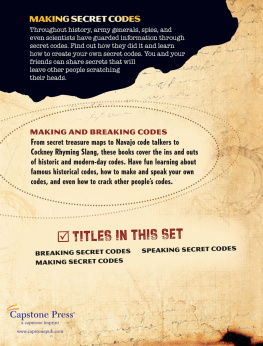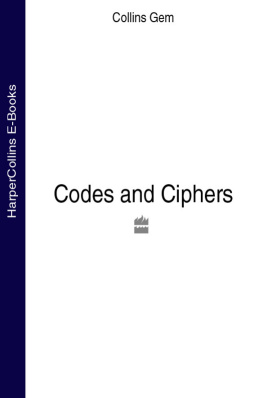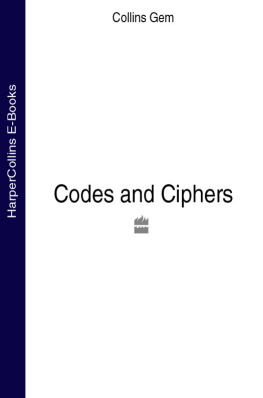
CODES FOR
HOMEOWNERS
Second Edition
Your Photo Guide to:
Electrical Codes Plumbing Codes Building Codes Mechanical Codes

by Bruce A. Barker

Contents

Introduction
B uilding codes are adopted by governmental agencies to preserve your familys safety as well as your fiscal well-being. Whether you are someone who likes to do your own home improvement and repair work, a homeowner acting as your own contractor, or anyone else who wants his or her work to conform to applicable building codes, this building code book is for you. Based largely on the 2012 version of the International Residential Code (IRC), it aims to make the most important wiring, plumbing, construction, and HVAC codes more accessible, simpler to navigate, and easier to understand so that you can interpret them effectively in your own home.
The key to accomplishing the objective of making codes easier to understand is simple in concept but a little tricky to execute: do it right and take pictures. In this book youll find hundreds of professional quality images that depict code-compliant practices. No wading through page after page of incomprehensible jargon; no studying jumbles of lines and strange symbols to try and answer your question. Simply see for yourself.
This book does not replace the IRC. It contains IRC provisions that have been selected to help you avoid common code violations, based on largely my years of experience as a professional building inspector. To avoid confusion and keep it simple, this book omits many highly technical IRC provisions and many provisions that you simply are unlikely to encounter. While every effort has been made to accurately present the recommended practices of the IRC with easy to understand language, pictures, and diagrams, this book is not the IRC. In a dispute, the wording in the IRC, as interpreted by the local building official, is the final authority on what IRC provisions mean. And, as well discuss, local code provisions and interpretations always overrule code books such as this one.
The intent of Codes for Homeowners is to serve as a reference that answers a host of questions that boil down to What should it look like when Im done? You will not find a lot of material that describes the specific steps needed to get thereyoull find many fine step-by-step instruction manuals that perform this part of the job.
By studying this book and understanding its contents, you will arrive in the ballpark, metaphorically speaking, of IRC code compliance. But codes do not happen in a vacuum. As we discuss in subsequent sections, each local building department and each local building inspector has his or her own opinions about how building codes apply in their area. If you have any doubts or questions about how a building code provision applies in your area, you should ask the local building official. In almost every case, if you approach them as a resource and not as an obstacle, you will find your local inspectors to be friendly, knowledgeable, and eager to help.
Bruce A. Barker
Residential Combination Inspector
International Code Council

Codes & Permits: The Basics
I n just the United States you will find hundreds of code books describing thousands upon thousands of building code provisions. On top of this, there are even more books that look and feel like code books but are really only attempting to describe best practices. Almost all of these have their own inherent value. But almost none of them apply to a typical homeowner living in a typical single-family home. As a homeowner and DIYer, perhaps the hardest thing about building codes is learning how to tell which one applies to you and, if there is a disagreement, which takes precedence. As an introduction, here are some brief biographies of the more common codes and enforcement agencies youre likely to encounter.

The International Residential Code
The International Residential Code (IRC) 2012 is one of an extensive collection of model building codes published by the International Code Council (ICC). A model building code is a recommended building code that is developed by a national organization that specializes in writing building codes. When adopted by a government agency, the IRC regulates the construction, renovation, maintenance, and repair of buildings used as homes. The IRC, by itself, has no formal legal status. A government agency must first adopt the IRC before it has any legal status in a local area.

State & Local Building Codes
Almost all areas of the United States have adopted some version of a building code. Some states, such as California, Florida, and New York, have a state building code. Some large cities, such as Chicago and New York City, have a city building code. Many of these state and local building codes are based on model building codes from the ICC.
The International Residential Code has no jurisdiction of its own but is the basis for many state and local residential building codes.
Smaller cities and counties often use ICC model building codes, such as the IRC. Some rural areas may not have adopted a building code, but this is becoming a rare situation. If you do any work that is regulated by the local building code, you are responsible for knowing, or for hiring someone who knows, the applicable building code where the building is located. Ignorance of the code is no excuse.

Some states and cities have their own building codes.

Local Code Amendments
Most building departments that use the IRC adopt local changes to the IRC. Many of these changes are minor and help to adapt the IRC to local conditions and needs. Some of these changes can significantly alter IRC provisions. The building department should publish, in writing, any changes adopted by the local government. You are responsible for knowing and complying with all local changes. Ask the building official if there are any local code changes.

Other Building Codes
The IRC is not the only building code. Other commonly used building codes include: The International Building Code (IBC), The International Mechanical Code (IMC), The International Plumbing Code (IPC), The Uniform Plumbing Code (UPC), The International Fuel Gas Code (IFG), The National Electrical Code (NEC), and The International Energy Conservation Code (IECC). Each of these building codes regulates a different aspect of building construction.














 Codes & Permits: The Basics
Codes & Permits: The Basics The International Residential Code
The International Residential Code
